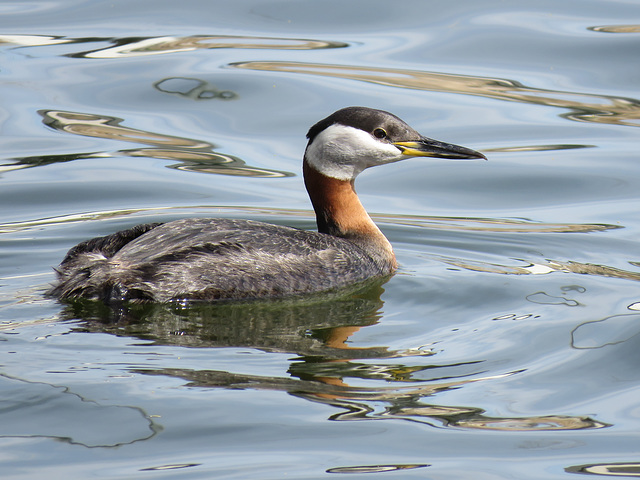Sara Longwing butterfly, Nariva Swamp afternoon, T…
Morinda citrifolia, Noni, Nariva Swamp afternoon,…
Yellow-headed Caracara, Nariva Swamp afternoon, Tr…
Unidentified plant, Nariva Swamp afternoon, Trinid…
Spiders and web, Nariva Swamp afternoon, Trinidad
Spider, Nariva Swamp afternoon, Trinidad
Spider, Nariva Swamp afternoon, Trinidad
Mangrove trees, Nariva Swamp afternoon, Trinidad
Unidentified fruit, Nariva Swamp afternoon, Trinid…
Frog Crab, Nariva Swamp afternoon, Trinidad
Frog Crabs, Nariva Swamp afternoon, Trinidad
A glimpse of the ocean at Nariva Swamp, Trinidad
Wattled Jacana, Nariva Swamp afternoon
Wattled Jacana, Nariva Swamp afternoon
Yellow-chinned Spinetail, Nariva Swamp afternoon
Yellow-chinned Spinetail, Nariva Swamp afternoon
Pied Water-Tyrant, Nariva Swamp afternoon, Trinida…
Pied Water-Tyrant, Nariva Swamp afternoon, Trinida…
Dragonfly, Nariva Swamp afternoon, Trinidad
Water Hyacinth / Eichhornia crassipes, Nariva Swam…
Sacred Lotus, Nariva Swamp afternoon, Trinidad
Lotus seedpod, Nariva Swamp afternoon, Trinidad
Fiddler Crab, Nariva Swamp, Trinidad
Mallard female
Nariva Swamp afternoon, Trinidad, Day 6
Nariva Swamp afternoon, Trinidad, Day 6
Nariva Swamp afternoon, Trinidad, Day 6
Bicolored Conebill female, I think
Local cat, Nariva Swamp afternoon
Striated Heron, Nariva Swamp afternoon
Orange-winged Parrot, Nariva Swamp afternoon
Nariva Swamp afternoon, Trinidad, Day 6
Savannah Hawk, Nariva Swamp afternoon
Nariva Swamp afternoon, Trinidad, Day 6
Nariva Swamp afternoon, Trinidad, Day 6
Bicolored Conebill / Conirostrum bicolor, Nariva S…
Nariva Swamp afternoon, Trinidad
Nariva Swamp afternoon, Trinidad, Day 6
Nariva Swamp afternoon, Trinidad, Day 6
Common (?) Iguana / Iguana iguana, Nariva Swamp a…
Great Egret, Nariva Swamp afternoon, Trinidad
Crested Caracara, Nariva Swamp afternoon, Trinidad
Common (?) Iguana / Iguana iguana, Nariva Swamp, T…
Crested Caracara / Caracara cheriway, Nariva Swamp…
Redhead male / Aythya americana
See also...
See more...Keywords
Authorizations, license
-
Visible by: Everyone -
All rights reserved
-
160 visits
Red-necked Grebe / Podiceps grisegena


HAPPY MOTHER'S DAY!
In Canada, this is celebrated each year on the second Sunday of May. Of course, every day should be Mother's Day.
The two photos I have just posted this morning, 14 May 2017, were taken three days ago, on 11 May 2017, at a pond in Calgary. Just a short drive and a quick visit.
Much as I don't like interrupting my Trinidad & Tobago images, I did want to add these local photos, otherwise I might forget. Seeing my calendar filling up rather quickly, I know that I will be getting various chances to take photos, and it would help greatly if I can get my holiday photos finished. Tonight, I will hopefully add a few more photos from my trip.
I love seeing these Red-necked Grebes, though they tend to be rather distant when I do see them. Most of the time, they just look so quietly elegant while they swim.
"The Red-necked Grebe breeds on small inland lakes in Canada and Alaska, and winters along both coasts of North America. Boldly marked, vocal, and aggressive during the breeding season, it is quiet and subtly attired in winter.
Like other grebes, the Red-necked Grebe ingests large quantities of its own feathers. Feathers remain in the bird's stomach. The function of feathers in the stomach is unknown. One hypothesis suggests that the feathers help protect the lower digestive tract from bones and other hard, indigestible material. The Red-necked Grebe also feeds its feathers to its young.
The Red-necked Grebe migrates over land strictly at night. It sometimes migrates over water or along coasts by day, in large flocks.
The oldest recorded Red-necked Grebe was at least 11 years old when it was found in Minnesota, the same state where it had been banded." From AllABoutBirds.
www.allaboutbirds.org/guide/Red-necked_Grebe/id
In Canada, this is celebrated each year on the second Sunday of May. Of course, every day should be Mother's Day.
The two photos I have just posted this morning, 14 May 2017, were taken three days ago, on 11 May 2017, at a pond in Calgary. Just a short drive and a quick visit.
Much as I don't like interrupting my Trinidad & Tobago images, I did want to add these local photos, otherwise I might forget. Seeing my calendar filling up rather quickly, I know that I will be getting various chances to take photos, and it would help greatly if I can get my holiday photos finished. Tonight, I will hopefully add a few more photos from my trip.
I love seeing these Red-necked Grebes, though they tend to be rather distant when I do see them. Most of the time, they just look so quietly elegant while they swim.
"The Red-necked Grebe breeds on small inland lakes in Canada and Alaska, and winters along both coasts of North America. Boldly marked, vocal, and aggressive during the breeding season, it is quiet and subtly attired in winter.
Like other grebes, the Red-necked Grebe ingests large quantities of its own feathers. Feathers remain in the bird's stomach. The function of feathers in the stomach is unknown. One hypothesis suggests that the feathers help protect the lower digestive tract from bones and other hard, indigestible material. The Red-necked Grebe also feeds its feathers to its young.
The Red-necked Grebe migrates over land strictly at night. It sometimes migrates over water or along coasts by day, in large flocks.
The oldest recorded Red-necked Grebe was at least 11 years old when it was found in Minnesota, the same state where it had been banded." From AllABoutBirds.
www.allaboutbirds.org/guide/Red-necked_Grebe/id
, Pam J have particularly liked this photo
- Keyboard shortcuts:
Jump to top
RSS feed- Latest comments - Subscribe to the comment feeds of this photo
- ipernity © 2007-2024
- Help & Contact
|
Club news
|
About ipernity
|
History |
ipernity Club & Prices |
Guide of good conduct
Donate | Group guidelines | Privacy policy | Terms of use | Statutes | In memoria -
Facebook
Twitter

Sign-in to write a comment.